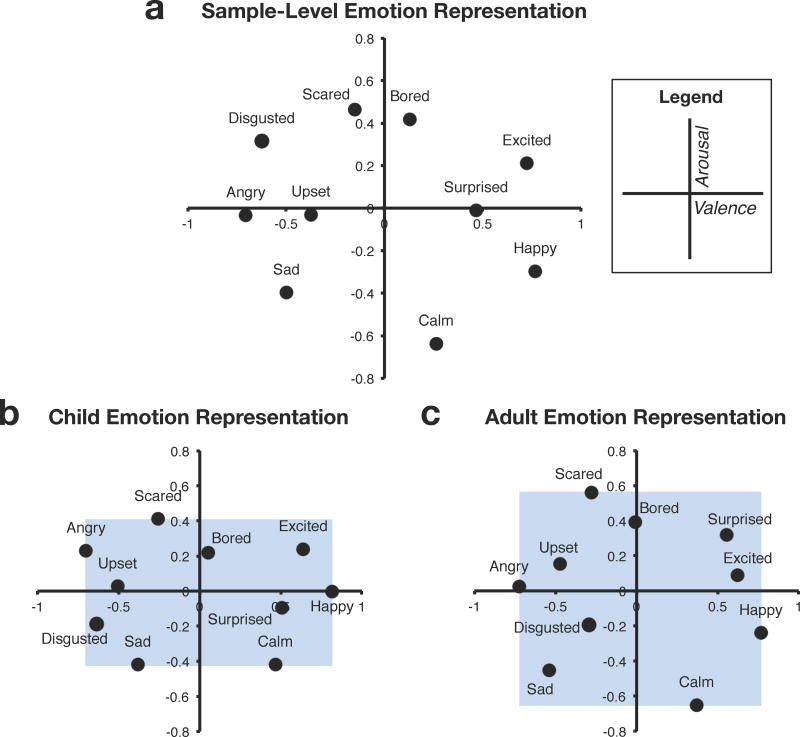Figure 2.
Visual depiction of sample-level emotion representation and changes in emotion representation across age. a) The overall sample-level emotion representation extracted from semantic similarities task ratings conformed to the circumplex model, as the first (horizontal) dimension represented valence (negative—positive), and the second (vertical) dimension represented arousal (activating—deactivating). Separate INDSCAL solutions of b) the 10 youngest (Mage = 8.04) and c) 10 oldest (Mage = 24.58) participants revealed that children’s emotion representations are wider (more spread along the valence dimension), shorter (less spread on the arousal dimension), and less bidimensional (more rectangular, rather than square) compared to adults’ representations.

